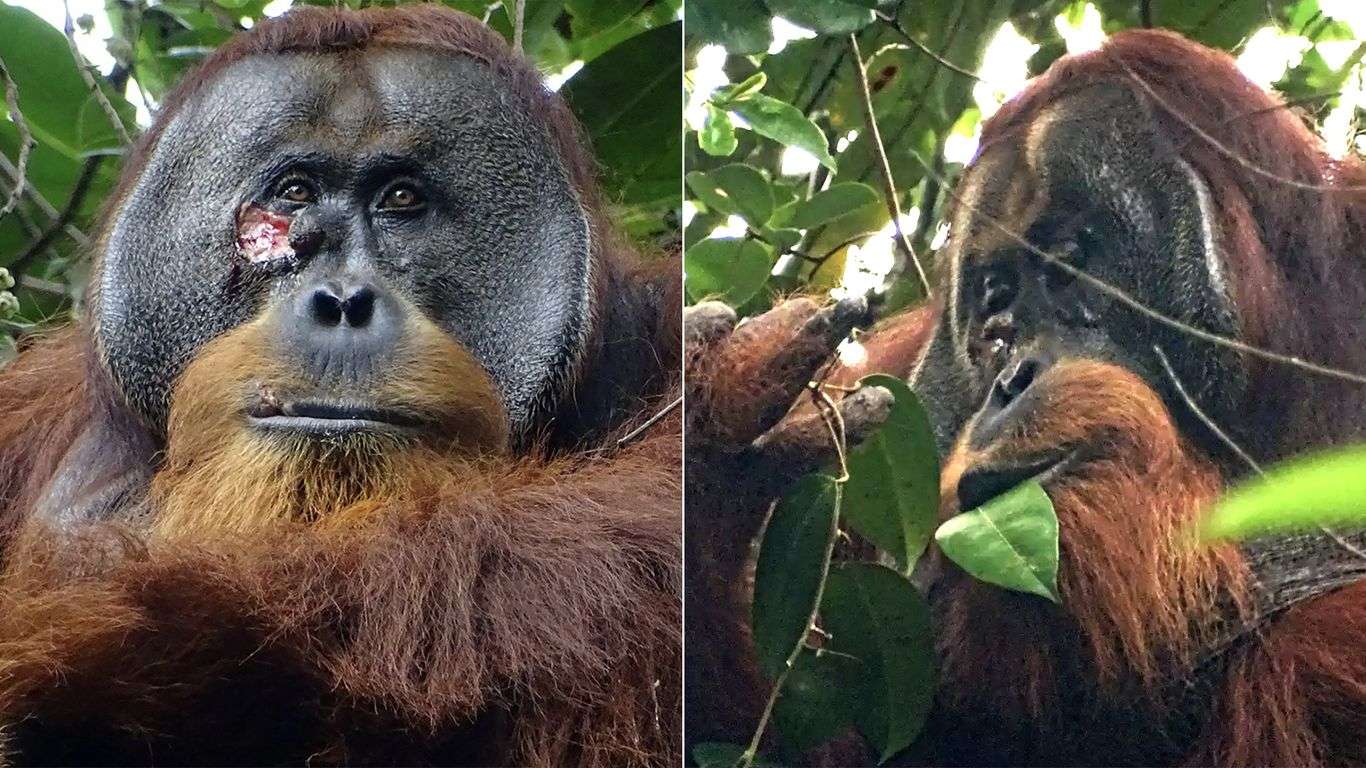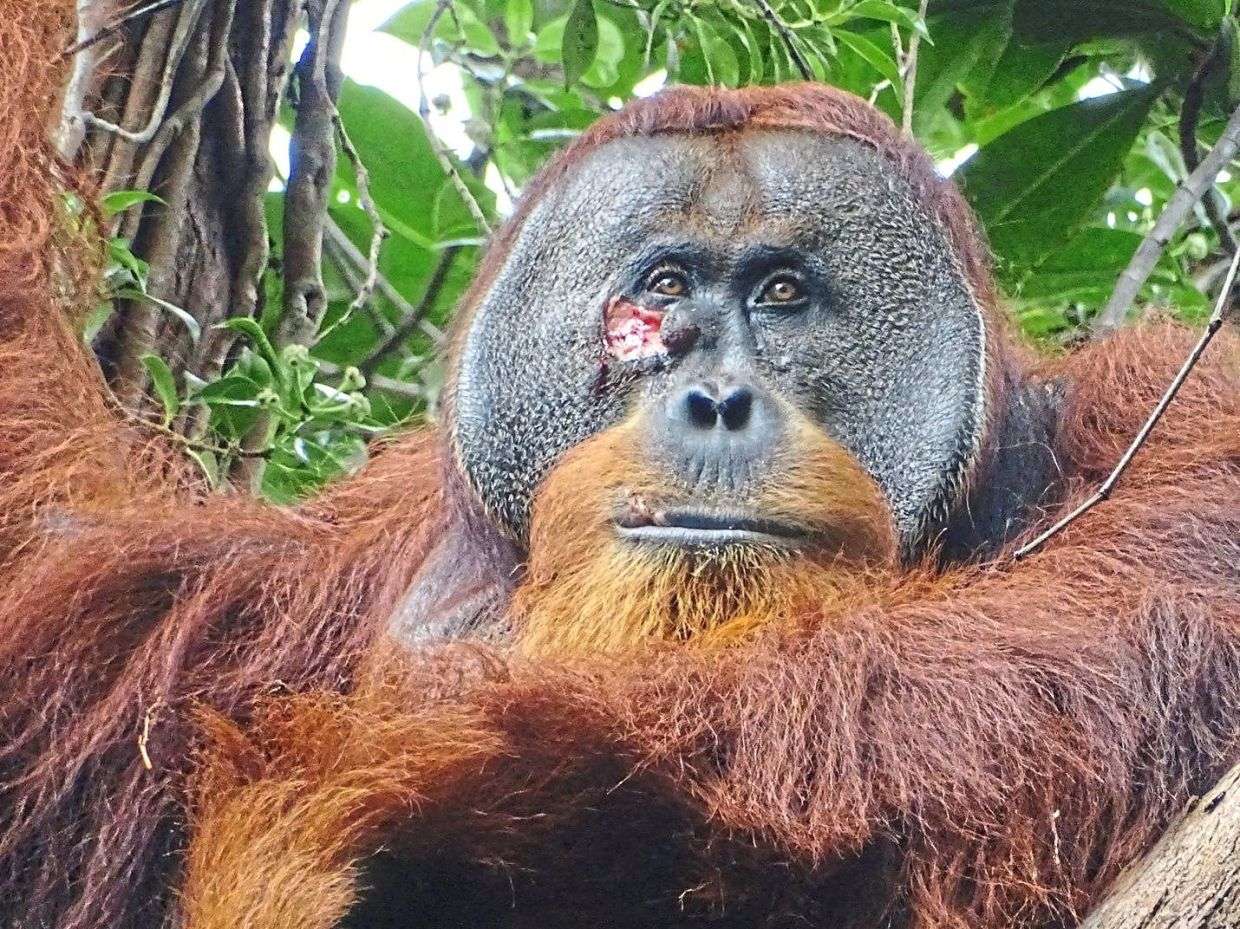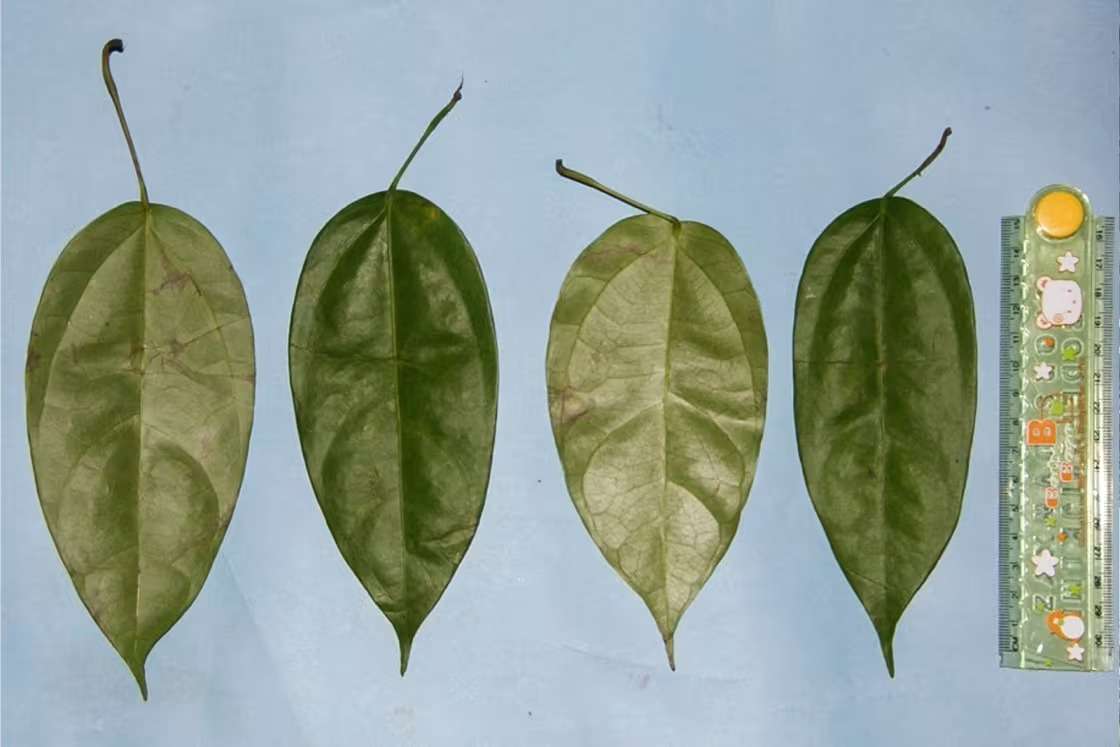Living Pantries: The Unique Storage Method of Honeypot Ants
These ants store honey in their abdomens and subsequently perish while nourishing the colony.

In June 2022, a group of scientists stumbled upon a remarkable discovery in the animal kingdom: a Sumatran orangutan named Rakus showed a behavior never seen before—he treated his own injury using a plant with medicinal properties.
This extraordinary event took place in Gunung Leuser National Park, a lush rainforest reserve located on Sumatra, an island in Indonesia. While exploring the park, the researchers heard distinctive vocalizations, known as "long calls," typically associated with signaling dominance or aggression among male orangutans. The following day, they noticed Rakus with a visible wound on his right cheek, just beneath his eye.

In the days that followed, the team observed Rakus in action. He began to select and chew on the stems and leaves of a plant called Akar Kuning (Fibraurea tinctoria), also known as yellow root. This plant, a climbing vine native to the area, is valued by local communities for its medicinal properties, which include treating ailments like diabetes, dysentery, and malaria.
While not a typical part of an orangutan's diet—researchers observed that yellow root is consumed only 0.3 percent of the time—Rakus still chose to eat it. He chewed the plant without swallowing, then applied its juices and pulp directly onto his wound, where flies had started to gather. Rakus returned to the plant the next day and continued consuming it. Remarkably, his wound healed completely in a short time. This groundbreaking observation was recently detailed in a study published in the journal Scientific Reports.

"This is the first instance of a wild animal actively using a medicinal plant to treat its wound," explains Isabelle Laumer, a primatologist at the Max Planck Institute of Animal Behavior in Germany and the lead author of the study, in an interview with National Geographic's Daryl Austin.
The wound took five days to close after treatment, and researchers observed no signs of infection even after a month. Studies on the chemistry of yellow root have revealed its impressive array of properties, including antibacterial, anti-inflammatory, anti-fungal, antioxidant, pain-relieving, and anticarcinogenic effects, as reported by Nicola Davis for The Guardian.
Sumatran orangutans are facing a critical threat to their survival, with only 14,600 individuals remaining worldwide. The area around Gunung Leuser's Suaq Balimbing research station boasts the highest concentration of these endangered creatures on Earth. Despite 21 years of observation in this park, scientists had never witnessed an orangutan self-healing a wound using Akar Kuning, a medicinal plant.
Gayathri Vaidyanathan of Nature News suggests that perhaps orangutans in the wild don't sustain enough injuries to require the healing properties of Akar Kuning. Alternatively, it's possible that Rakus, now 35 years old, is the only individual aware of this technique.
Regardless of the reason, scientists agree that this observation provides valuable insights into natural medicinal practices.
Mary Ann Raghanti, a biological anthropologist at Kent State University not involved in the study, highlights the importance of recognizing that modern medicine has roots in ancient knowledge systems dating back millions of years. She tells National Geographic that our understanding of these practices is still expanding, emphasizing the significance of this discovery.
Previous studies have highlighted instances of Bornean orangutans using self-medication, such as rubbing chewed plants on their limbs, possibly to relieve muscle soreness. Additionally, chimpanzees have been observed spreading chewed insects over their wounds, although the effectiveness of this practice remains uncertain. Similar behaviors are seen in other animals; for example, certain bird species engage in "anting," where they rub ants on themselves to remove parasites or feather mites, according to Douglas Main of The New York Times.
What sets Rakus's behavior apart is his treatment of an external wound and the recognized healing properties of Akar Kuning, making it a unique observation acknowledged by scientists.
Caroline Schuppli, a primatologist at the Max Planck Institute of Animal Behavior and co-author of the study, suggests that Rakus's actions demonstrate a shared knowledge between orangutans and humans, as reported by Nature News.
This incident could provide insight into the origins of self-medication for wounds, a practice mentioned in a medical manuscript dating back to 2200 B.C.E., notes The Guardian.
Anne Pusey, an evolutionary anthropologist at Duke University not involved in the study, emphasizes that while this behavior has only been observed once in the study population, it raises intriguing questions about the evolutionary roots of self-medication in humans and other species, according to National Geographic.
Be the first to comment